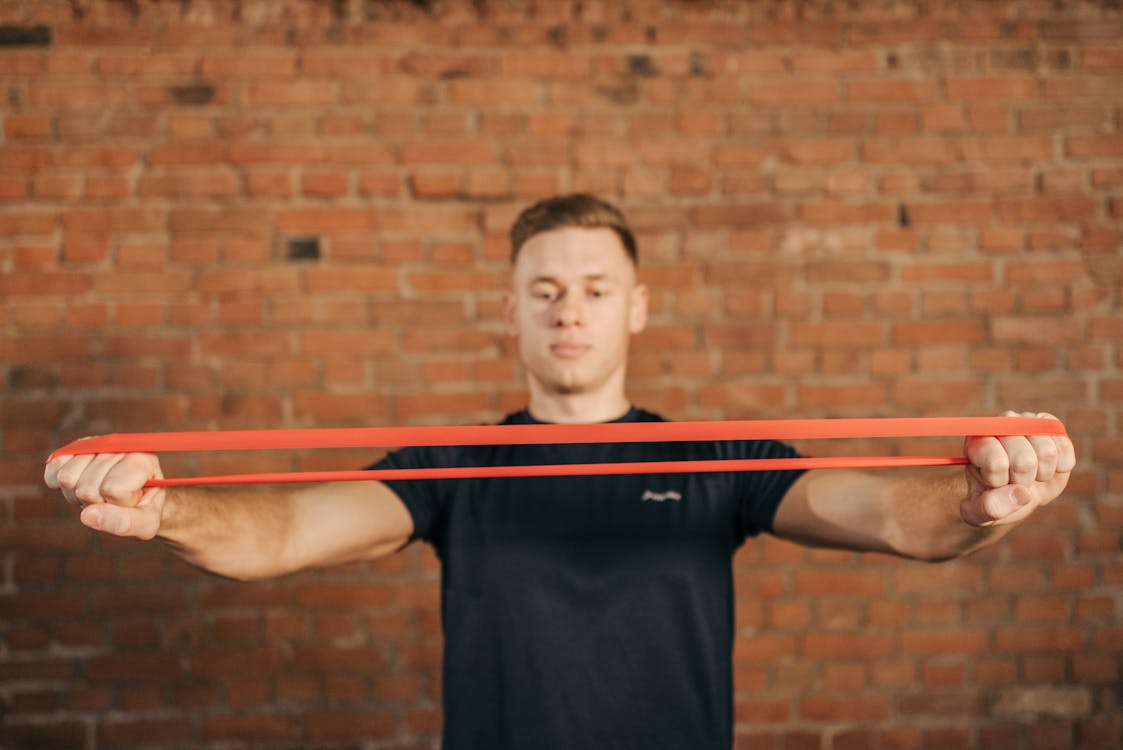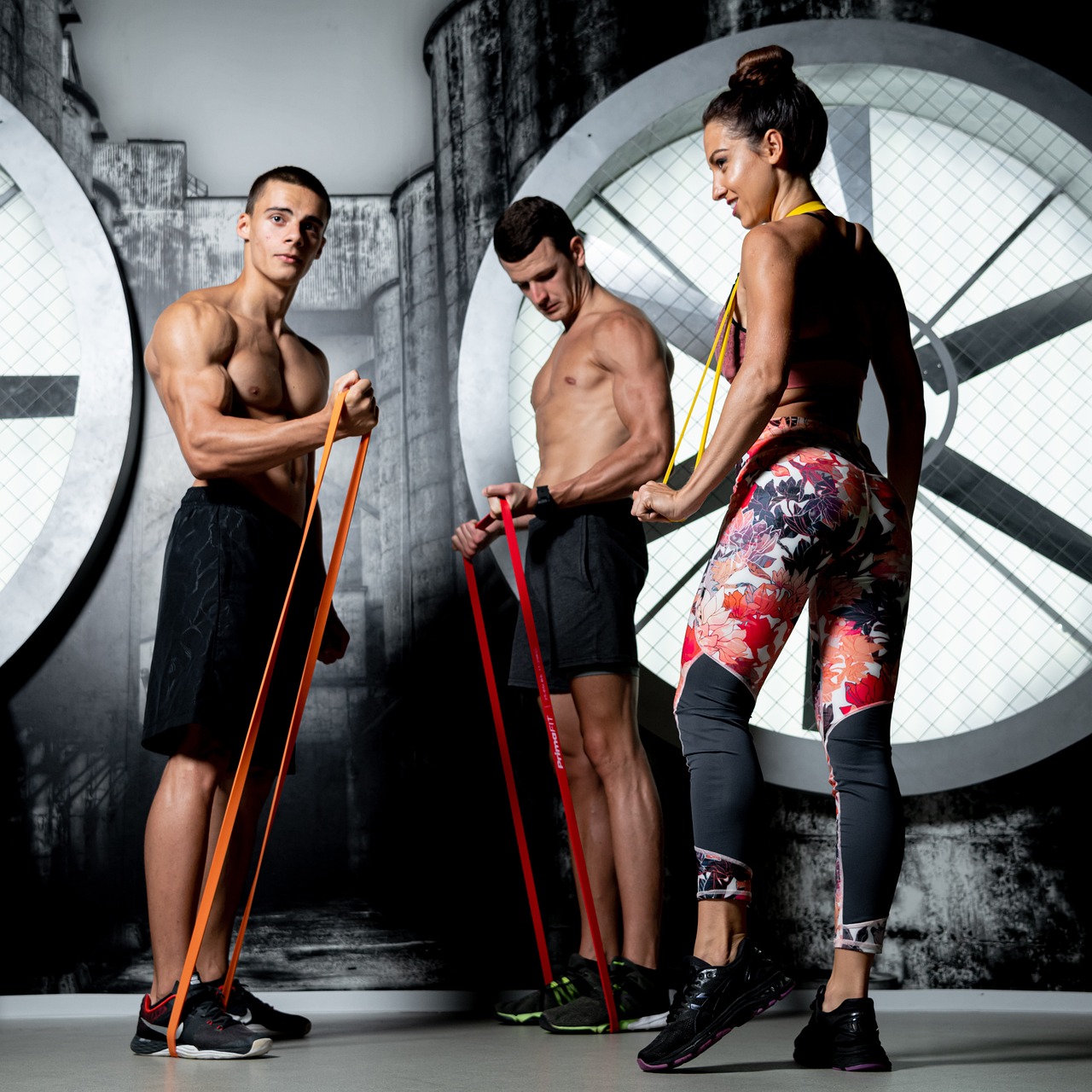
A strong and well-defined back is not only aesthetically beautiful, but it is also necessary for excellent posture and total upper body strength. While traditional weightlifting routines are popular for targeting back muscles, resistance bands provide a diverse and effective alternative. In this post, we’ll look at a full resistance band back workout that will help you build a strong and balanced back without the use of heavy gym equipment.
Table of Contents
The Advantages of Resistance Bands for Back Exercises
- Resistance bands available in a variety of resistance levels, making them perfect for people of all fitness levels. Using multiple bands or modifying the length and tension of the band allows you to simply adjust the intensity of your workout.
- It is portable as resistance bands are lightweight and portable, they are great for at-home workouts, travel, and outdoor training sessions. You may take them with you and exercise almost anywhere.
- Resistance bands, unlike heavyweights, maintain consistent tension across the whole range of motion, lowering the risk of joint strain and damage.
- Isolation: Resistance bands provide careful targeting of specific back muscles, assisting you in strengthening weaker areas and improving muscle balance.
Resistance Band Back Workout
This workout regimen is organized into three portions that target distinct areas of your back: upper, mid, and lower. Maintain perfect form throughout each exercise and strive for 3-4 sets of 10-15 repetitions per exercise. Adjust the resistance band tension to your fitness level as needed.
Warm-up: It is critical to warm up your muscles before beginning any training regimen to avoid injury. Spend 5-10 minutes doing light aerobic workouts like jumping jacks, stationary jogging, or brisk walking.
Upper Back Exercises:
Resistance Band Pull-Aparts:
- Stand with your feet shoulder-width apart, holding a resistance band in front of you with both hands.
- Keeping your arms straight, pull the band apart by squeezing your shoulder blades together.
- Slowly return to the starting position.Repeat for 3-4 sets of 12-15 reps.
2. Bent Over Rows:
- Stand with your feet shoulder-width apart, holding a resistance band in front of you with both hands.
- Keeping your arms straight, pull the band apart by squeezing your shoulder blades together.
- Slowly return to the starting position.
- Repeat for 3-4 sets of 12-15 reps.
Mid-Back Exercises:
Seated Rows:
- Sit on the floor with your legs extended and loop the resistance band around your feet.
- Hold the band handles with both hands, palms facing each other.
- Pull the band towards your torso by bending your elbows and squeezing your mid-back muscles.
- Slowly release and extend your arms.
- Repeat for 3-4 sets of 12-15 reps.
Face Pulls:
- Attach the resistance band to a stable anchor point at chest height.
- Hold the band handles with both hands and step back to create tension.
- Pull the band towards your face, keeping your elbows high and squeezing your rear deltoids and upper back.
- Slowly return to the starting position.
- Repeat for 3-4 sets of 12-15 reps.

Lower Back Exercises:
Superman Extensions:
- Lie face down on the floor with the resistance band looped around your ankles.
- Extend your arms overhead and lift your chest and legs off the ground simultaneously, squeezing your lower back.
- Hold for a moment, then lower back down.
- Repeat for 3-4 sets of 12-15 reps
Good Mornings:
- Step on the middle of the resistance band with both feet, shoulder-width apart.
- Place the band behind your neck, holding the handles in front of your shoulders.
- Hinge at your hips while keeping your back straight, leaning forward until your torso is almost parallel to the ground.
- Return to an upright position, squeezing your lower back and glutes.
- Repeat for 3-4 sets of 10-12 reps.
In the world of fitness and strength training, the back is sometimes overlooked in favor of more visible muscular groups. Yet it is our bodies’ unsung hero, providing critical support, stability, and strength for daily activities. The quest of a strong and well-balanced back is about more than simply looks; it’s also about improving posture, avoiding injuries, and achieving overall physical perfection. We discovered the great potential of resistance bands as a formidable tool for improving back strength and balance in our thorough research.
We’ve discussed the several advantages of using resistance bands into your back training program throughout this post. Before delving into the broader implications of employing resistance bands for back training, consider the following benefits:
- Resistance bands are available in a variety of resistance levels, appealing to people of all fitness levels. This versatility enables novices to create the basis for strength and elite athletes to precisely target specific muscle areas.
- Resistance bands, unlike bulkier exercise equipment, are lightweight and small. They simply fit into a gym bag or suitcase, allowing you to exercise wherever you want. For frequent travelers or those who prefer the flexibility of home training, this convenience is vital.
- Resistance bands provide continuous, controlled tension across the whole range of motion, lowering the possibility of joint-related disorders and making them a good alternative for long-term joint health.

This article’s resistance band back workout is the key to unlocking the entire potential of resistance bands for your back training needs. You can attain comprehensive development by consistently engaging in workouts that especially target the upper back, mid-back, and lower back, promoting not just a strong and impressive physique but also better functionality and injury resilience.
Upper Back: The exercises designed for the upper back, such as resistance band pull-aparts and bent-over rows, zero in on the muscles responsible for shoulder blade retraction and posture. A well-sculpted upper back not only enhances your aesthetics but also counteracts the effects of prolonged sitting and poor posture, which can lead to discomfort and musculoskeletal issues.
Mid-Back: Mid-back exercises, such as seated rows and face pulls, prioritize the muscles involved in shoulder adduction and scapular retraction. A robust mid-back ensures balanced shoulder mobility and stability, an asset for athletes engaged in sports that necessitate frequent overhead movements, like swimming, basketball, or tennis.
Lower Back: Lower back exercises, including superman extensions and good mornings, focus on fortifying the muscles of the lumbar spine and the posterior chain. A powerful lower back contributes to core stability, spinal support, and overall functional strength, which are indispensable for activities like lifting heavy objects or participating in sports such as powerlifting.
However, the importance of resistance bands goes beyond just beauty and functionality. It extends beyond muscle growth and athletic prowess to include holistic well-being and injury avoidance. This is where the actual power of resistance bands shines through.
Resistance bands, as we’ve stated throughout this essay, provide a unique and moderate form of resistance that may be adapted to individual needs. Unlike traditional weightlifting workouts, which rely on gravity and can result in rapid load changes, resistance bands provide constant and controlled tension throughout the full range of motion. This feature reduces the likelihood of overuse injuries, joint strain, and unexpected muscle imbalances, all of which are major problems in traditional strength training.
Furthermore, resistance bands are appropriate for people of all fitness levels, from beginner to advanced. You may tailor a workout to your current fitness level by simply tweaking the resistance level, changing the length and tension of the band, or varying the exercise angles. This not only promotes a safe and progressive progression, but also keeps you challenged as your strength grows.
Another important consideration is the usability of resistance bands. Their tiny and lightweight design provides maximum convenience. Resistance bands can easily adapt to your preferred location, whether it’s the familiar setting of a gym, the comfort of your own home, or the gorgeous outdoors. This adaptability gives you unrivaled flexibility and freedom in pursuing your fitness goals.
Finally, the resistance band back workout offers a road map to a stronger, more robust back. The importance of consistent practice, attention to form, and gradual improvement cannot be overstated. You’re not simply growing a strong back when you use resistance bands; you’re also promoting a better, more empowered lifestyle. So, take use of the resistance band’s possibilities now and allow your back be the foundation of your strength and well-being. Accept the possibilities and allow your back guide you to a healthier and more active lifestyle.
In conclusion It’s important to remember that the ultimate goal of physical fitness and strength goes beyond sculpting a chiseled physique or obtaining peak athletic performance. It spans a broader range of health and well-being, and it is here that the full value of maintaining a healthy body shines through.
A healthy body is a valuable asset that serves as the foundation for a happy and flourishing life. While the resistance band back workout discussed in this article clearly helps to strengthen the back, it is only one piece of the equation. A healthy body provides not only tangible advantages in strength and endurance, but also intangible improvements in general quality of life.
A healthy body, first and foremost, promotes physical resilience. It better prepares us to confront life’s obstacles, whether they be the rigors of our daily routine, the pursuit of our passions, or unexpected adversity. A strong body has the stamina and adaptability needed to face life’s challenges without becoming exhausted or ill.
A healthy body, first and foremost, promotes physical resilience. It better prepares us to confront life’s obstacles, whether they be the rigors of our daily routine, the pursuit of our passions, or unexpected adversity. A strong body has the stamina and adaptability needed to face life’s challenges without becoming exhausted or ill.
As we age, a healthy body promotes lifespan and an improved quality of life. It lowers the risk of chronic diseases, increases bone density, and keeps our joints supple and functional. This increases our chances of preserving independence and a vigorous lifestyle well into our senior years.
Furthermore, the advantages of a healthy body go beyond the person and include our interactions with others. It fosters social connections since shared physical activity and fitness interests frequently result in bonds and camaraderie. This social aspect not only enriches our lives, but also provides critical support networks during difficult times.
In the grand scheme of things, keeping a healthy body helps to the overall well-being of society. It lessens the strain on healthcare systems, promotes a more productive workforce, and eventually leads to a more wealthy and peaceful society.
The resistance band back workout presented here is about more than just developing a strong back; it is also about creating the groundwork for a happier and more fulfilling life. We may truly appreciate the transformational power of a healthy body by taking a holistic approach to fitness—one that prioritizes not only aesthetics but also physical and mental well-being.
So, as you embark on your resistance band path to a stronger back, keep in mind that your efforts reach far beyond the gym or your home training environment. You are investing in a healthier, happier, and more resilient you—a you who is better prepared to face life’s difficulties, nurture your mental and emotional well-being, and enjoy a long and rewarding journey through the years. Accept the importance of a healthy body and use it as a guiding light to a life of vitality and well-being.



